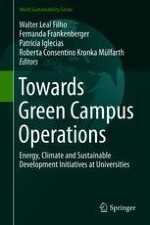
2018 | OriginalPaper | Buchkapitel
Space, Like Time, Is Money: Evaluating Space Utilisation in Saudi Arabian Universities
verfasst von : Naif Alghamdi
Erschienen in: Towards Green Campus Operations
Aktivieren Sie unsere intelligente Suche, um passende Fachinhalte oder Patente zu finden.
Wählen Sie Textabschnitte aus um mit Künstlicher Intelligenz passenden Patente zu finden. powered by
Markieren Sie Textabschnitte, um KI-gestützt weitere passende Inhalte zu finden. powered by